By delivering a range of models and services on a single platform, new levels of efficiency and cost-effectiveness are brought to the re/insurance industry.

ARA
| Model | Location | Peril | Status |
|---|---|---|---|
| HurLoss: ARA’s “HurLoss” US hurricane model provides detailed insight into the risk from North Atlantic hurricanes, enabling clients to effectively manage their portfolios. The model covers 21 US States and the perils of wind and storm-surge and contains both historical and stochastic event sets. A range of primary and secondary modifiers are catered for via a comprehensive set of vulnerability curves, including bespoke curves for industrial facilities business. | USA | Hurricane | Available |
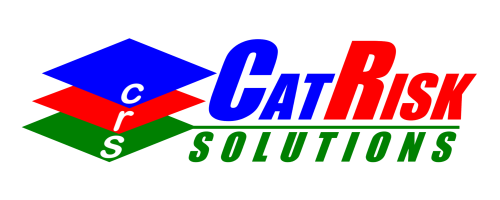
CatRisk Solutions
| Model | Location | Peril | Status |
|---|---|---|---|
| CATRisk Solution’s earthquake model covers 155 countries throughout Europe, Asia, Middle East and Africa on an aggregated and site specific basis. Please contact us for the full list of countries. | Europe, Asia, Middle East, Africa | Earthquake | Available |

Combus
| Model | Location | Peril | Status |
|---|---|---|---|
| Australia Bushfire: The bushfire peril model covers fires in grassland, scrub or forest that cover wide areas and cause damage and loss to the environment and property. The event occurrence model is based on parameters such as temperature, humidity and wind speed and the probability of building loss takes into account type of vegetation as well as physical distance. | Australia | Bushfire | Available |
| Australia Low Pressure System: The low pressure system model covers five different categories of Australian weather which have similar event features and mixes of damage and loss from sub-perils. The five weather types are East Coast Lows, Eastern Low Pressure Troughs, West Coast Troughs, Southern Ocean Lows and Monsoonal Low Pressure Troughs. | Australia | Bushfire | Available |
| Australia Severe Convective Storm: The severe convective storm model covers thunderstorm events due to instability in different layers of the atmosphere which can include the loss-causing sub-perils of strong winds, flooding, hail, tornadoes and lightning. These events tend to last for a number of hours with the most damage occurring over a short period of time, compared to other weather events which may last for more than one day. | Australia | Storm | Available |
| Australia Earthquake: The earthquake model includes events with epicentres in Australia and in surrounding regions that lead to significant ground motion for Australian exposures. Site intensities in each modelled event are estimated based on a blend of published attenuation studies while damage to property takes account of Australian design codes. | Australia | Earthquake | Available |
| Australia Cyclone: The full tracks of each cyclone are modelled, including events crossing the coastline and those bypassing coastal regions. For each event in the database the maximum wind speed is determined for each location of interest and using that wind speed, modified by adjustments for terrain and topography, loss to individual buildings and contents is estimated. Wind, flood and storm surge. | Australia | Flood | Available |
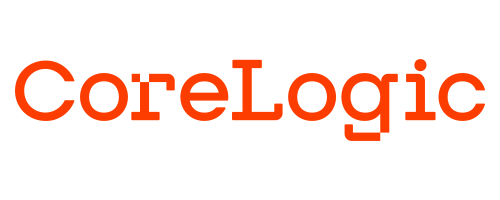
CoreLogic
| Model | Location | Peril | Status |
|---|---|---|---|
| U.S. Earthquake: uses a bottom-up, physics-based approach to model earthquake losses, based on established principles of seismology, geology, geophysics, structural engineering, statistics and other related fields. It incorporates 2014 USGS and UCERF3 hazard data as well as two recurrence frequency models: time-dependent and time-independent. It also explicitly models damage due to liquefaction and earthquake-induced landslide. | USA | Earthquake | Available |
| Japan Earthquake: With the latest view of science and a 300,000 year simulation, the CoreLogic model is able to capture differences in scientific opinion and observed clustering behavior. It also incorporates a high-resolution and detailed understanding of building inventory used throughout the model process, from disaggregation through to claims validation, and it includes the sub-perils of tsunami, fire-following and sprinkler-leakage. | Japan | Earthquake | Available |

ERN & Red
| Model | Location | Peril | Status |
|---|---|---|---|
| Pan European Seismic Risk Model: Hazard, Exposure and Vulnerability models for the Earthquake Risk assessment of 44 countries in Europe. Based on state-of-the-art methodologies, tools, software and data, it tackles the generation of the components necessary to the probabilistic evaluation of the effects of earthquake-induced ground shaking on residential, commercial, public and industrial buildings in Europe at country and portfolio scales. | Europe | Earthquake | Available |

Fathom
| Model | Location | Peril | Status |
|---|---|---|---|
| Fathom Global Flood Cat is the only global flood catastrophe model that provides users with all major flood perils (pluvial, fluvial and coastal). It comprises millions of events spanning 10,000 years at 30 m resolution, making it ideal for anyone interested in quantifying and mitigating accumulation risk. Customize the model to your needs by inputting user-supplied vulnerability curves, scaling hazard and vulnerability, and applying bespoke flood defense assumptions specific to each location — or utilize Fathom’s default settings. Built on Fathom’s Global Terrain Data and Global Flood Map, this model is underpinned by some of the world’s most validated and peer-reviewed datasets. | Global | Flood | Available |

Global Earthquake Model
| Model | Location | Peril | Status |
|---|---|---|---|
| The GEM Colombia model is based upon GEM’s regional model for South America first developed from 2013 to 2015 within the South America Risk Assessment (SARA) project funded by the Swiss Re Foundation and updated in 2018. The development process involved dozens of local scientists and engineers from earthquake-prone countries in South America, resulting in an open product for analyzing ground-up loss from ground shaking for residential, commercial, and industrial buildings. This model has been further improved with local information, such as local construction practices, replacement costs and level of enforcement of the seismic regulations. | Columbia | Earthquake | Available |
| GEM’s South Africa earthquake risk model was generated using the hazard model for South Africa developed by the South Africa Council for Geoscience as the national hazard model, and for input to South Africa building design regulations. The vulnerability and exposure models and data were developed by GEM and cover the residential, commercial and industrial building stock. The risk model may be used to assess potential financial losses to commercial, industrial and residential buildings due to earthquake ground shaking. | South Africa | Earthquake | Available |
| The China model has been developed by GEM using public sources of past seismicity, geodesy and geology, exposure and vulnerability information. The hazard component incorporates both faults and area sources. Earthquake occurrence rates on active faults are based on a new tectonic block model derived from the joint inversion of geodetic and geologic data. The risk model provides estimates of risk to residential, commercial and industrial buildings using GEM’s vulnerability models appropriate to Chinese construction practice. GEM has also developed an exposure model that can be used to estimate total losses to the building stock in addition to portfolio losses. GEM extensively collaborated with its private and public partners to test and validate the model against industry standards in order to produce a new model that represents GEM’s view of risk. | China | Earthquake | Available |

IPE
| Model | Location | Peril | Status |
|---|---|---|---|
| IPE Models cover Hail modelling for Europe with innovative approaches to model MCPI Crops, Motor Own Damage and Property along with 24hr time frame which allow pricing of Time Clause effects. The current model covers France but is expanding to Italy and Germany. | France | Hail | Available |
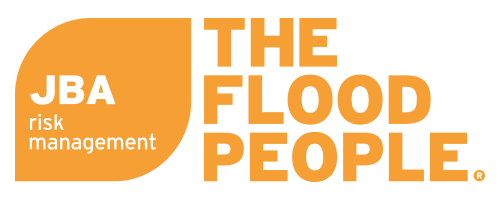
JBA
| Model | Location | Peril | Status |
|---|---|---|---|
| Global River and Surface Water Flood: JBA’s revolutionary Global Flood Model covers river and surface water flood at 30m resolution worldwide, it enables global probabilistic quantification of loss for the first time using globally consistent hazard data and an event set made up of over 15 million flood events. Underpinned by JBA’s FLY Technology, almost all model parameters can be customized to meet individual needs. | Global | Flood | Available |
| UK River, Surface Water and Coastal Flood: JBA’s UK Flood probabilistic model is the first to include river, surface water and coastal flood for the United Kingdom. Designed with the implementation of Flood Re in mind, the model enables the comprehensive, high-resolution quantification of flood risk to insured properties. | UK | Flood | Available |

Impact Forecasting
| Model | Location | Peril | Status |
|---|---|---|---|
| Europe Windstorm: Impact Forecasting's Europe Windstorm model provides (re)insurers with a solution that is consistent with past loss experience, scientifically robust, innovative and transparent. In 2022 Impact Forecasting release an update to the model that draws on analysis of historical major storms, as well as more recent, low severity, high frequency events. In addition, more detailed residential occupancies have been included. | Europe | Windstorm | Available |
| Europe SCS/Hail: Impact Forecasting's Europe SCS/Hail model provides (re)insurers with scientifically robust, innovative, and transparent model that supports rigorous testing and validation requirements. Fully probabilistic model for hail is the main driver of the majority of large losses in Europe. The stochastic event set spans 50,000 years. Countries covered: Austria, Belgium, Czech Republic, France, Germany, Netherlands, Poland, Slovenia, and Switzerland. | Europe | SCS/Hail | Available |
| Canada Flood: Impact Forecasting's Canada Flood model offers (re)insurers a more complete view of risk in the region. The model helps insurers better underwrite and manage their river-based (fluvial), off-flood plain and rainfall (pluvial) exposures. The model assesses the potential levels of damage based on engineering expertise and claims data. | Canada | Flood | Available |
| Canada Earthquake: Impact Forecasting's Canada Earthquake model provides (re)insures with provision of loss estimates for client’s portfolios - both on a probabilistic and scenario basis. Stochastic and scenario event-sets provide a comprehensive view of earthquake hazard for Canada, also including a set of secondary perils - fire following, liquefaction, landslides and tsunami. It offers a range of outputs, inclusive of annual aggregates and probable maximum loss estimates for single risks and a portfolio of properties. | Canada | Earthquake | Available |
| Arabian Peninsula Earthquake: Impact Forecasting's Arabian Peninsula Earthquake model provides (re)insurers with a better understanding of how their portfolios will stand up against earthquakes of varying severity. The model makes use of state-of-the art research on regional seismic risk published in leading academic forums. | Middle East | Earthquake | Available |
| Austria Flood: Impact Forecasting's Austria flood model provides quantifications of various financial loss aspects caused by riverine (fluvial) and rainfall (pluvial) flooding and associated phenomena. This enables (re)insurers to better understand their exposure to flood events and make more informed underwriting and portfolio decisions. | Austria | Flood | Available |
| Switzerland Flood: Impact Forecasting's Switzerland Flood model calculates both probabilistic and historical loss estimates which helps (re)insurers better understand property catastrophe risk. The model reflects locally sourced data and the latest developments in hydrology to quantify financial losses caused by riverine and lake flooding. | Switzerland | Flood | Available |
| Malaysia Flood: Impact Forecasting's Malaysia Flood model helps (re)insurers manage their exposures in Asia through utilisation in pricing and underwriting, accumulation management, reinsurance structuring and fulfilling regulatory and rating agency requirements. The model has the ability to analyse portfolios with residential, commercial and industrial estate lines of business and includes construction, building height and basement modifiers. | Malaysia | Flood | Available |
| Terrorism Risk: Impact Forecasting’s Terrorism Blast Model for Manhattan (New York) enables underwriters, exposure managers, and (re)insurance buyers to precisely evaluate the impact of a bomb blast to gain a granular view of loss accumulations. IF’s high-resolution, computational fluid dynamics (CFD) terrorism blast model provides the insight to better assess and manage critical property and workers compensation exposures with innovative modelling techniques. | Manhattan | Terrorism | Available |
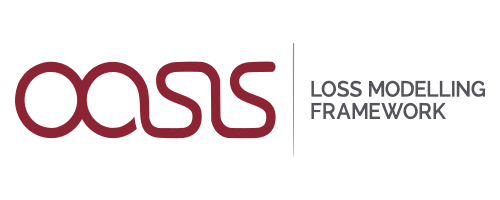
Oasis LMF
| Model | Location | Peril | Status |
|---|---|---|---|
| The Deterministic model developed by Oasis LMF allows the user to specify damage ratios by coverage and by location which are applied to the respective TIVs to produce ground-up loss and (via the Oasis financial model) gross loss and loss net of reinsurance. This can be used to calculate exposed limit or to help understand the impact of propagating scenario losses through the relevant financial structures. | N/A | N/A | Available |
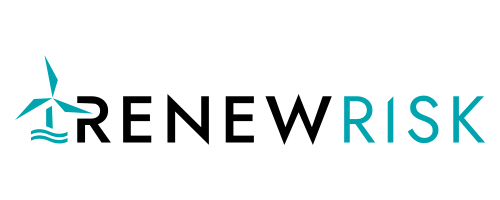
Renew Risk
| Model | Location | Peril | Status |
|---|---|---|---|
| USTC: Renew-Risk's NE US (NEUS) Hurricane Model is one of the world’s first suite of commercially available catastrophe models built specifically for offshore windfarms, incorporating input from multiple Early Adopter (re)insurers and broker leading this field. Exposure captures turbines/cables/substations (offshore and onshore), which can be modelled in-situ and in laydown areas. The US stochastic event set goes beyond traditional wind-only-approach to explicitly model both wind and wave action – critical for performance of offshore structures. The US vulnerability component combines extensive, detailed patented engineering approaches with expert elicitation from world-leaders in offshore engineering. Losses are validated in many ways, including against Renew Risk’s own PML/EML studies for multiple US windfarms across multiple return periods. | USA | Hurricane | Available |
| TWTC: Renew-Risk's Taiwan Tropical Cyclone (TWTC) Model is one of of the world’s first suite of commercially available catastrophe models built specifically for offshore windfarms, incorporating input from multiple Early Adopter (re)insurers and broker leading this field. Exposure captures turbines/cables/substations (offshore and onshore), which can be modelled in-situ and in laydown areas. The Taiwan stochastic event set goes beyond traditional wind-only-approach to explicitly model both wind and wave action – critical for performance of offshore structures. The Taiwan vulnerability component combines extensive, detailed patented engineering approaches with expert elicitation from world-leaders in offshore engineering. Losses are validated in many ways, including against Renew Risk’s own PML/EML studies for multiple Taiwanese windfarms across multiple return periods. | Taiwan | Tropical Cyclone | Available |
| TWEQ: Renew-Risk's TW Earthquake (TWEQ) Model is one of the world’s first suite of commercially available catastrophe models built specifically for offshore windfarms, incorporating input from multiple Early Adopter (re)insurers and broker leading this field. Exposure captures turbines/cables/substations (offshore and onshore), which can be modelled in-situ and in laydown areas. The Taiwan stochastic event set goes beyond ground-shaking to explicitly model submarine landslide and liquefaction – critical for performance of subsea foundations and cables respectively. The Taiwan vulnerability component combines extensive, detailed patented engineering approaches with expert elicitation from world-leaders in offshore engineering. Losses are validated in many ways, including against Renew Risk’s own PML/EML studies for multiple Taiwanese windfarms across multiple return periods. | Taiwan | Earthquake | Available |
| JPTC: Renew-Risk's Japan Tropical Cyclone (JPTC) Model is one of the world’s first suite of commercially available catastrophe models built specifically for offshore windfarms, incorporating input from multiple Early Adopter (re)insurers and broker leading this field. Exposure captures turbines/cables/substations (offshore and onshore), which can be modelled in-situ and in laydown areas. The Japan stochastic event set goes beyond traditional wind-only-approach to explicitly model both wind and wave action – critical for performance of offshore structures. The Japan vulnerability component combines extensive, detailed engineering approaches with expert elicitation from world-leaders in offshore engineering. Losses are validated in many ways, including against Renew Risk’s own PML/EML studies for multiple Japanese windfarms across multiple return periods. | Japan | Tropical Cyclone | Available |
| JPEQ: Renew-Risk's Japan Earthquake (JPEQ) Model is one of the world’s first suite of commercially available catastrophe models built specifically for offshore windfarms, incorporating input from multiple Early Adopter (re)insurers and broker leading this field. Exposure captures turbines/cables/substations (offshore and onshore), which can be modelled in-situ and in laydown areas. The Japanese stochastic event set goes beyond ground-shaking to explicitly model submarine landslide and liquefaction – critical for performance of subsea foundations and cables respectively. The Japan vulnerability component combines extensive, detailed engineering approaches with expert elicitation from world-leaders in offshore engineering. Losses are validated in many ways, including against Renew Risk’s own PML/EML studies for multiple Japanese windfarms across multiple return periods. | Japan | Earthquake | Available |

Risk Frontiers
| Model | Location | Peril | Status |
|---|---|---|---|
| Australian Hail Model - HailAUS 7.0: Risk Frontiers’ HailAUS 7.0 is a fully stochastic loss model for hail and covers all of Australia. It includes a catalogue of hail storms reflecting frequency and severity of ‘high storm potential days’ derived from reanalysis data and the observed historical record. It calculates losses for Residential, Commercial, Industrial property as well as Motor portfolios. | Australia | Hail | Available |
Get Started with Nasdaq
Get In Touch
Get access to Nasdaq's cat risk modelling ecosystem with a wide range of risk models available.
We've received your information.
Someone from our team will contact you soon.
Nasdaq Risk Modelling for Catastrophes
Efficient solution to manage risk, explore new opportunities and comply with regulatory requirements.
